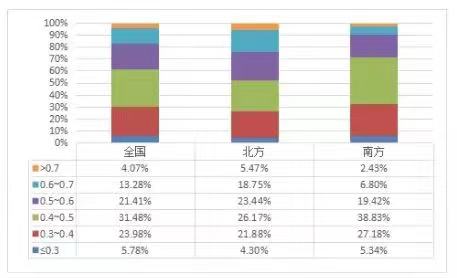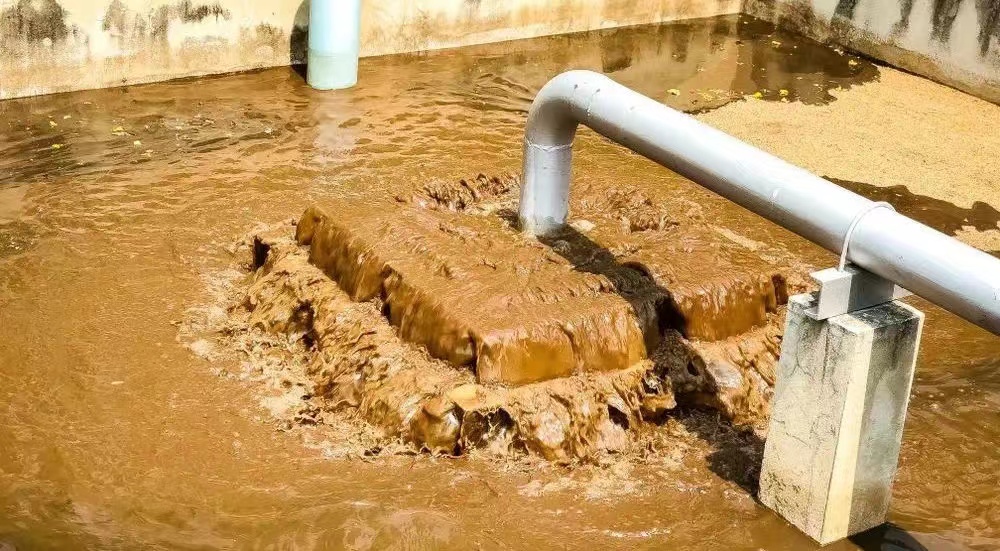As a pollution control enterprise, the most important task of a sewage treatment plant is to ensure that the effluent meets the standards. However, with the increasingly strict discharge standards and the aggressiveness of environmental protection inspectors, it has brought great operational pressure to the sewage treatment plant. It’s really getting harder and harder to get the water out.
According to the author’s observation, the direct cause of the difficulty in reaching the water discharge standard is that there are generally three vicious circles in my country’s sewage plants.
The first is the vicious circle of low sludge activity (MLVSS/MLSS) and high sludge concentration; the second is the vicious circle of the larger the amount of phosphorus removal chemicals used, the more sludge output; the third is the long-term sewage treatment plant Overload operation, equipment can not be overhauled, running with diseases all year round, leading to a vicious circle of reduced sewage treatment capacity.
#1
The vicious circle of low sludge activity and high sludge concentration
Professor Wang Hongchen has conducted research on 467 sewage plants. Let’s take a look at the data of sludge activity and sludge concentration: Among these 467 sewage plants, 61% of the sewage treatment plants have MLVSS/MLSS less than 0.5, about 30 % of treatment plants have MLVSS/MLSS below 0.4.
The sludge concentration of 2/3 of the sewage treatment plants exceeds 4000 mg/L, the sludge concentration of 1/3 of the sewage treatment plants exceeds 6000 mg/L, and the sludge concentration of 20 sewage treatment plants exceeds 10000 mg/L.
What are the consequences of the above conditions (low sludge activity, high sludge concentration)? Although we have seen a lot of technical articles that analyze the truth, but in simple terms, there is one consequence, that is, the water output exceeds the standard.
This can be explained from two aspects. On the one hand, after the sludge concentration is high, in order to avoid sludge deposition, it is necessary to increase aeration. Increasing the amount of aeration will not only increase the power consumption, but also increase the biological section. The increase of dissolved oxygen will snatch the carbon source required for denitrification, which will directly affect the denitrification and phosphorus removal effect of the biological system, resulting in excessive N and P.
On the other hand, the high sludge concentration makes the mud-water interface rise, and the sludge is easily lost with the effluent of the secondary sedimentation tank, which will either block the advanced treatment unit or cause the effluent COD and SS to exceed the standard.
After talking about the consequences, let’s talk about why most sewage plants have the problem of low sludge activity and high sludge concentration.
In fact, the reason for the high sludge concentration is the low sludge activity. Because the sludge activity is low, in order to improve the treatment effect, the sludge concentration has to be increased. The low sludge activity is due to the fact that the influent water contains a large amount of slag sand, which enters the biological treatment unit and accumulates gradually, which affects the activity of microorganisms.
There is a lot of slag and sand in the incoming water. One is that the interception effect of the grille is too poor, and the other is that more than 90% of sewage treatment plants in my country have not built primary sedimentation tanks.
Some people may ask, why not build a primary sedimentation tank? This is about the pipe network. There are problems such as misconnection, mixed connection, and missing connection in the pipe network in my country. As a result, the influent water quality of sewage plants generally has three characteristics: high inorganic solid concentration (ISS), low COD, Low C/N ratio.
The concentration of inorganic solids in the influent water is high, that is, the sand content is relatively high. Originally, the primary sedimentation tank could reduce some inorganic substances, but because the COD of the influent water is relatively low, most sewage plants simply Do not build a primary sedimentation tank.
In the final analysis, low sludge activity is a legacy of “heavy plants and light nets”.
We have said that high sludge concentration and low activity will lead to excessive N and P in the effluent. At this time, the response measures of most sewage plants are to add carbon sources and inorganic flocculants. However, the addition of a large amount of external carbon sources will lead to a further increase in power consumption, while the addition of a large amount of flocculant will produce a large amount of chemical sludge, resulting in an increase in sludge concentration and a further reduction in sludge activity, forming a vicious circle.
#2
A vicious circle in which the greater the amount of phosphorus removal chemicals used, the greater the sludge production.
The use of phosphorus removal chemicals has increased the sludge production by 20% to 30%, or even more.
The problem of sludge has been a major concern of sewage treatment plants for many years, mainly because there is no way out for the sludge, or the way out is unstable. .
This leads to the prolongation of sludge age, resulting in the phenomenon of sludge aging, and even more serious abnormalities such as sludge bulking.
The expanded sludge has poor flocculation. With the loss of effluent from the secondary sedimentation tank, the advanced treatment unit is blocked, the treatment effect is reduced, and the amount of backwashing water increases.
The increase in the amount of backwash water will lead to two consequences, one is to reduce the treatment effect of the previous biochemical section.
A large amount of backwash water is returned to the aeration tank, which reduces the actual hydraulic retention time of the structure and reduces the treatment effect of the secondary treatment;
The second is to further reduce the processing effect of the depth processing unit.
Because a large amount of backwashing water must be returned to the advanced treatment filtration system, the filtration rate is increased and the actual filtration capacity is reduced.
The overall treatment effect becomes poor, which may cause the total phosphorus and COD in the effluent to exceed the standard. In order to avoid exceeding the standard, the sewage plant will increase the use of phosphorus removal agents, which will further increase the amount of sludge.
into a vicious circle.
#3
The vicious circle of long-term overload of sewage plants and reduced sewage treatment capacity
Sewage treatment depends not only on people, but also on equipment.
Sewage equipment has been fighting in the front line of water treatment for a long time. If it is not regularly repaired, problems will occur sooner or later. However, in most cases, sewage equipment cannot be repaired, because once a certain equipment stops, the water output is likely to exceed the standard. Under the system of daily fines, everyone cannot afford it.
Among the 467 urban sewage treatment plants surveyed by Professor Wang Hongchen, about two-thirds of them have hydraulic load rates greater than 80%, about one-third greater than 120%, and 5 sewage treatment plants are greater than 150%.
When the hydraulic load rate is greater than 80%, except for a few super-large sewage treatment plants, the general sewage treatment plants cannot shut down the water for maintenance on the premise that the effluent reaches the standard, and there is no backup water for aerators and secondary sedimentation tank suction and scrapers. The lower equipment can only be completely overhauled or replaced when it is drained.
That is to say, about 2/3 of the sewage plants cannot repair the equipment on the premise of ensuring that the effluent meets the standard.
According to Professor Wang Hongchen’s research, the lifespan of aerators is generally 4-6 years, but 1/4 of the sewage plants have not performed air-venting maintenance on the aerators for as long as 6 years. The mud scraper, which needs to be emptied and repaired, is generally not repaired all the year round.
The equipment has been running with illness for a long time, and the water treatment capacity is getting worse and worse. In order to withstand the pressure of the water outlet, there is no way to stop it for maintenance. In such a vicious circle, there will always be a sewage treatment system that will face collapse.
#4
write at the end
After environmental protection was established as my country’s basic national policy, the fields of water, gas, solid, soil and other pollution control developed rapidly, among which the field of sewage treatment can be said to be the leader. Insufficient level, the operation of the sewage plant has fallen into a dilemma, and the problem of pipeline network and sludge has become the two major shortcomings of my country’s sewage treatment industry.
And now, it’s time to make up for the shortcomings.
Post time: Feb-23-2022






